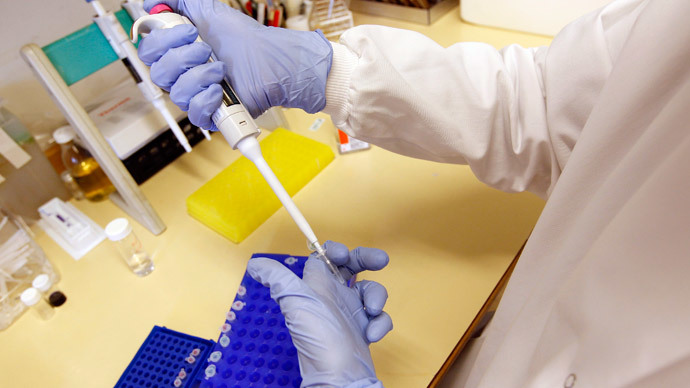Antibiotics cause dangerous bacteria communities to appear, study says

Antibiotics can cause the appearance of new harmful bacteria, new research suggests. The findings come as concerns grow that the overuse of antibiotics is creating resistance to bacteria, and the appearance of so-called “superbugs.”
"For a long time we have thought that bacteria make antibiotics for the same reasons that we love them – because they kill other bacteria," Elizabeth Shank, assistant professor of biology at University of North Carolina at Chapel Hill, told Science Daily.
Antibiotics are derived from special microorganisms or other living systems, and are created using a fermentation process.
READ MORE: White House wants $1.2bn to fight antibiotic-resistant bacteria, looming superbug epidemic
"However, we have also known that antibiotics can sometimes have pesky side effects, like stimulating biofilm formation," Shank said, referring to her study published in in the journal Proceedings of the National Academy of Sciences.
Biofilms are communities of bacteria that form on surfaces, for instance, medical catheters or feeding tubes in patients.
Biofilms may be both beneficial – for example, when they form on plant roots to protect them from the contamination in the soil – and harmful. They are responsible for several chronic diseases that are difficult to treat, such as cystic fibrosis, endocarditis and cystitis.
READ MORE: NY subway shelters bubonic plague, anthrax, 600+ unknown organisms
“It was never that surprising that many bacteria form biofilms in response to antibiotics: it helps them survive an attack,” Shank told Phys.org. “But it's always been thought that this was a general stress response, a kind of non-specific side effect of antibiotics. Our findings indicate that this isn't true. We've discovered an antibiotic that very specifically activates biofilm formation, and does so in a way that has nothing to do with its ability to kill."
The side effect of biofilm formation may not be a side effect at
all, Shank said. Bacteria may have evolved to produce
antibiotics, so that biofilms appear – and not only to kill, as
previously thought.
READ MORE: Dishwashers could be causing children allergies, study sa
"That suggests that antibiotics can independently and simultaneously induce potentially dangerous biofilm formation in other bacteria and that these activities may be acting through specific signaling pathways," Shank said.
"It has generated further discussion about the evolution of antibiotic activity, and the fact that some antibiotics being used therapeutically may induce biofilm formation in a strong and specific way, which has broad implications for human health," she said.
Increasingly, scientists say bacteria have been starting to resist antibiotics in cases of malaria, typhoid and tuberculosis.
Also, several studies have shown that antibiotics may be harmful for the body’s good bacteria, and can do damage to the healthy cells and vital functions of an organism.












